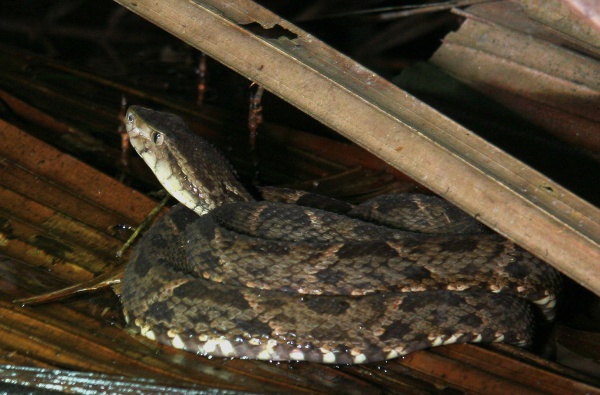Facts About Terciopelo
The Bothrops asper, commonly known as the terciopelo or fer-de-lance, is a venomous pit viper native to regions spanning from southern Mexico to northern South America. This species is frequently located near human habitation and poses a significant risk due to its defensive behavior. It is a primary cause of snakebites in its geographical area.
The name "Bothrops" underscores the pit organs that these snakes possess, enabling them to sense heat, whereas "asper" alludes to their rough, keeled scales. Depending on the region, the terciopelo is known by various names, reflecting its extensive range and formidable reputation.
Visually, the terciopelo is distinguished by its broad, flat head and a wide array of colors and patterns. These snakes can reach lengths of up to 2.5 meters, with females typically being larger than males.
Bothrops asper inhabits diverse environments, from lowland rainforests to higher altitudes. They favor moist surroundings such as rainforests and evergreen forests. These snakes are nocturnal and generally solitary, preying on an extensive range of animals, both ectothermic and endothermic.
Reproduction in Bothrops asper is seasonal, with litter sizes varying based on location. Females commonly mate with multiple males during the breeding season. They are among the most prolific snakes in the Americas, with gestation periods lasting between six to eight months.
The terciopelo is infamous for its venom, which is responsible for numerous snakebite injuries and fatalities within its habitat. This has necessitated the development of antivenoms and ongoing research to mitigate its impact.
In terms of taxonomy, Bothrops asper was previously considered a subspecies of B. atrox but is now recognized as a distinct species. Despite its potent venom, the terciopelo has natural predators like the Goliath birdeater spider, illustrating the intricate ecological relationships within its habitat.

 Mexico
Mexico